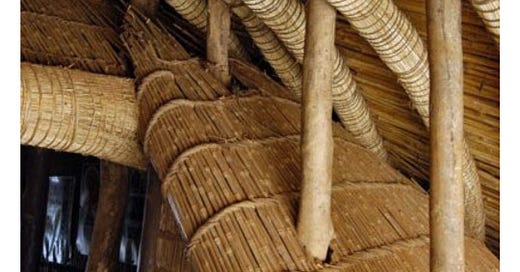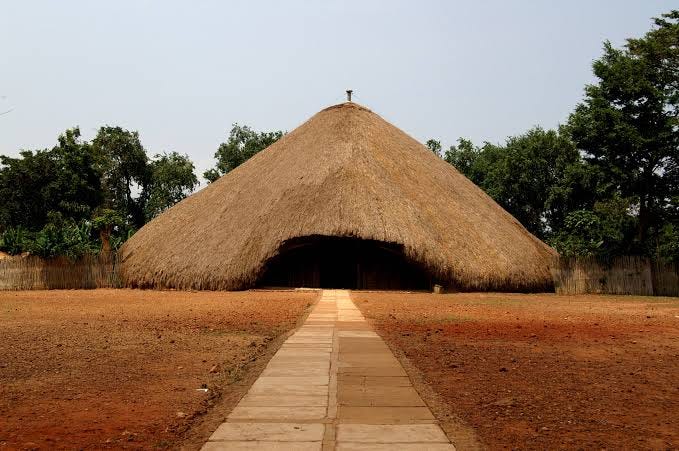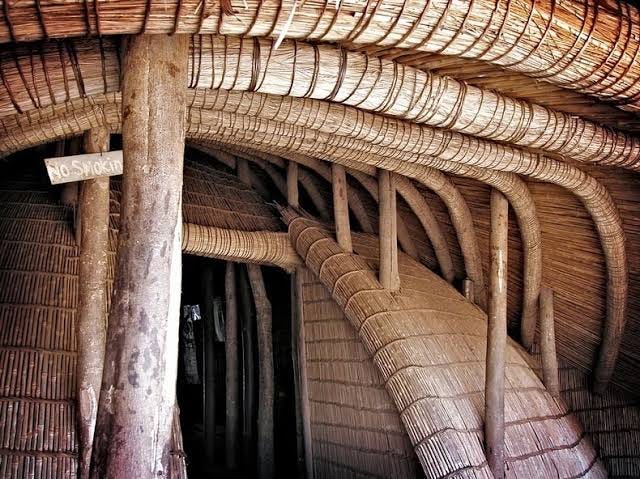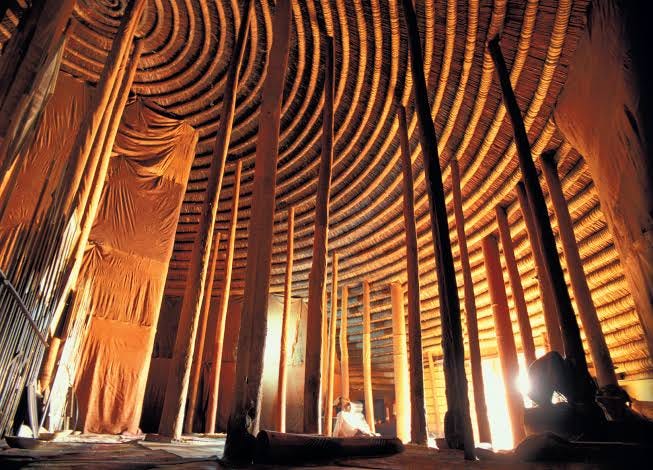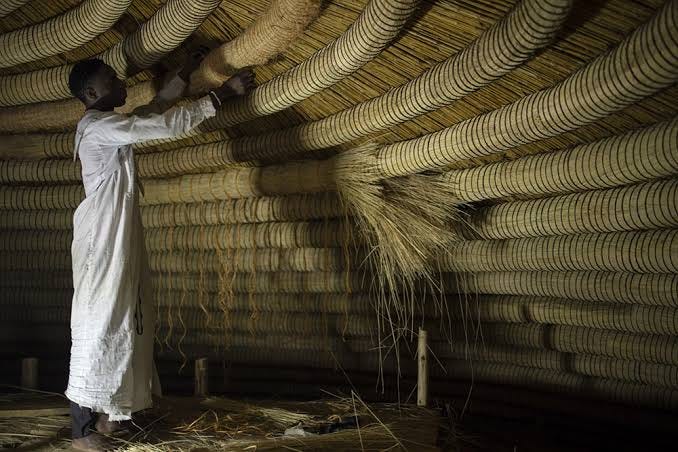With our journey slowly coming to an end , we head to the east, where we explore the tombs of Buganda kings in Kasubi. These ancient tombs hold the remains of Buganda kings, serving as a reminder of the rich cultural heritage of the region. As we wander through the sacred grounds, we are transported back in time to a period of great power and tradition. The intricate architecture and symbolic artefacts tell the story of a kingdom that has weathered many storms yet remains resilient in the face of adversity. The tombs of Buganda kings in Kasubi are a testament to the enduring legacy of a proud and storied people, whose history continues to shape the present and inspire the future.
The circular thatched-roof structure houses the remains of past kings and is the spiritual heart of the Buganda Kingdom. For over a century, the Kasubi Tombs connected the Baganda to their ancestors and traditions. Join us as we explore the history of the Kasubi Tombs, understand why they're so significant to the Baganda people, and look at efforts to rebuild and restore this sacred place. It's a story of cultural heartbreak but also of resilience and revival.
The Kasubi Tombs in Kampala, Uganda, serve as the burial grounds for four kabakas (kings) of the Baganda Kingdom. Constructed in the 19th century, the tombs house the remains of the first kabaka of Buganda, Mutesa l, along with three other kabakas. For the Baganda people, the Kasubi Tombs represent the heart and soul of the kingdom and its rich cultural heritage.
The main tomb, Muzibu Azaala Mpanga, is a magnificent circular building with a 52-foot high, grass-thatched roof, representing a traditional Baganda palace. The site is revered as a symbol of spirituality, royalty, and the beliefs of the Baganda.
The Kasubi Tombs play an integral role in preserving the cultural traditions of the Baganda people. They are cared for by the Kabaka's widows and other women who maintain the tombs and pass down oral histories to younger generations. However, a fire in 2010 destroyed much of the main tomb. Reconstruction efforts aim to restore the tombs using traditional materials and building techniques, demonstrating the enduring cultural significance of this historic site.
In 2010, a devastating fire engulfed the Kasubi Tombs, destroying the main building, which contained several royal tombs of Buganda kings. The tombs were a UNESCO World Heritage Site, recognised for their architectural and cultural significance. The fire was a huge blow to the Baganda people and Ugandans in general.
The cause of the fire is still unknown, though some suspect arson due to a land dispute.
The tombs sat on a large piece of land, making them a target. The government's slow response to the fire and failure to release investigation findings also fueled controversy. Many felt not enough was done to protect this irreplaceable cultural landmark.
The Kasubi tombs remain a profound symbol of Buganda heritage. Though reconstruction can't replace what was lost, it signifies the enduring cultural connection between the Baganda people and their ancestral kings.
The successful restoration of this UNESCO site is crucial for preserving an architectural wonder and honouring Uganda's rich history for generations to come. Overall, the painful burning and gradual rebirth of the Kasubi tombs reveal their timeless significance.
The Baganda people have cared for and protected the Kasubi Tombs for centuries.
Despite facing many challenges, their enduring connection to this sacred site serves as an inspiration. The tombs stand as a reminder of the Baganda kingdom's rich history and as a symbol of cultural pride.
Rebuilding and preserving them honours that lasting legacy and helps pass on this heritage to future generations. Overall, the tombs remain the heart and soul of the Baganda people.
And there you have it. Kasubi Tombs hold such importance in Buganda culture that they're recognised as a UNESCO World Heritage Site. This sacred burial ground honours past Kabakas in a way that strengthens present traditions. The Baganda people have rebuilt and restored Kasubi Tombs as a testament to their unity.
For them, this place represents far more than bricks and mortar. It's the heart and soul of their community. And it will continue inspiring future generations, as long as they maintain its upkeep and legacy. So now you know why Kasubi Tombs matter so much.
By maintaining and upholding these sacred sites, we ensure that the stories and values of our ancestors are not forgotten. Let us continue to honour and respect the legacies that have been passed down to us so that we may continue to learn from and grow from them. Thank you for joining us on this exploration of Africa. May we carry the lessons learned with us on our future travels.
What part of this blog post stood out to you the most?
Let us know in the comments .
Signed,
F & K

